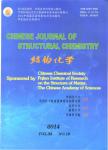How Many Methanol Molecules Can Solvate a Glycine: a PBE1PBE Approach
How Many Methanol Molecules Can Solvate a Glycine: a PBE1PBE Approach作者机构:MOE Key Laboratory of Laser Life Science & Institute of Laser Life Science College of Biophotonics South China Normal University
出 版 物:《Chinese Journal of Structural Chemistry》 (结构化学(英文))
年 卷 期:2011年第30卷第11期
页 面:1656-1671页
核心收录:
学科分类:081704[工学-应用化学] 07[理学] 08[工学] 0817[工学-化学工程与技术] 070303[理学-有机化学] 0703[理学-化学]
基 金:supported by NNSFC (No. 20973067 and 11079020) Guangdong-NSF grants (No. 7005823) the scientific research foundation for the returned overseas Chinese scholars, State Education Ministry the foundation for introduction of talents by the universities in Guangdong Province
主 题:DFT microsolvation gibbs free energy amino acid glycine
摘 要:Microsolvation of glycine in methanol clusters is explored by the use of DFT calculation method. The lowest energy conformations within 16.72 kJ·mol^-1 of the glycine clustering with one to six methanol molecules, which are obtained at the B3LYP/6-31+G(d) level of theory, are reoptimized at PBE1PBE/6-311+G(d,p). The calculated results agree with our previous results with B3LYP (Chin. J. Chem. Phys. 22 (2009) 577) that the clusters of two forms (Z- and N-form) tend to be isoenergetic when the number of the solvate molecules reaches six. Furthermore, this result is in good agreement with the experiment of the tryptophan-methanol clusters, implying that the present treatments are reasonable and reliable. The results also indicate that nine methanol molecules are not enough to fully solvate a glycine molecule, and a tentative estimation is obtained that ten methanol molecules may fully solvate a glycine molecule, which consists with the experiment results.



